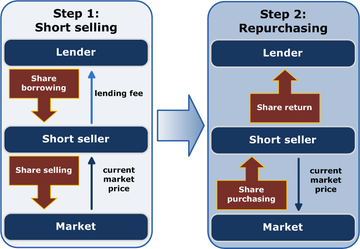Sunday, May 24, 2009
What's a Gold Bug?
Gold bugs view gold as a safe investment that will protect them from currency fluctuations or downturns in the financial markets. The market does continue to view gold as the traditional "safe harbor" during times of economic crisis.
The term was popularized in the 1896 US Presidential Election, when William McKinley supporters took to wearing gold lapel pins, gold neckties, and gold headbands in a demonstration of support for gold against the "silver menace", though the term's original use may have been in Edgar Allan Poe's 1843 story "The Gold-Bug," about a cryptographic treasure map.
How to review MF investments before redeeming the units?
If your mutual fund investment is yielding a lower return than what you anticipated, you may be tempted to redeem your units and invest the money elsewhere. The rate of return of other funds may look enticing, but be careful: there are both pros and cons to the redemption of your MF units. Let's examine the circumstances in which liquidation of your fund units would be most optimal and when it may have negative consequences.
1. Mutual Funds Are Not Stocks
2. When Your Fund Changes
3. Change in Fund Manager
4. Change in Fund Strategy
5. Change in Fund Performance
6. When Your Personal Investment Portfolio Changes
7. The need to rebalance your portfolio
8. Need a tax break
Read here to know in details about the different circumstance..
Friday, May 15, 2009
Value at Risk (VAR or VaR)
Value at Risk is a widely used measure of the risk of loss on a specific portfolio of financial assets.Value at risk has been called the "new science of risk management" A technique used to estimate the probability of portfolio losses based on the statistical analysis of historical price trends and volatilities.VaR is able to measure risk while it happens and is an important consideration when firms make trading or hedging decision.
e.g. Let 0 be the current time. With value-at-risk, we summarize a portfolio's market risk by reporting some parameter of this distribution. For example, we might report the 90%-quantile of the portfolio's single-period USD loss. This is called one-day 90% USD VaR. If a portfolio has a one-day 90% USD VaR of, say, USD 5MM, it can be expected to lose more than USD 5MM on one trading day out of ten. This is illustrated in Exhibit 1.
Example: One-Day 90% USD VaR
Exhibit 1![]()

VaR has five main uses in finance: risk management, risk measurement, financial control, financial reporting and computing regulatory capital.A risk manager has two jobs: make people take more risk the 99% of the time it is safe to do so, and survive the other 1% of the time. VaR is the border.Common parameters for VaR are 1% and 5% probabilities and one day and two week horizons, although other combinations are in use.Although it virtually always represents a loss, VaR is conventionally reported as a positive number. A negative VaR would imply the portfolio has a high probability of making a profit, for example a one-day 5% VaR of negative $1 million implies the portfolio has a 95% chance of making $1 million or more over the next day.
To sum up,Value-at-Risk (VaR) measures the worst expected loss under normal market conditions over a specific time interval at a given confidence level.It has 3 main components e.g.
Thursday, May 14, 2009
Dash to Trash
A term relating to when investors flock to a class of securities or other assets, bidding up prices to beyond what can be justified by valuation or other fundamental measures. While the dash-to-trash effect can occur within any type of security, the phrase is typically used to describe low-quality stocks and high-yield bonds, both of which can be subject to periods of overbuying in the markets.
As the name graphically implies, investors are buying low-quality assets or assets that do not correctly price in the risks associated with them. The dash to trash often occurs near the end of a prolonged bull market, when investors begin to seek higher returns regardless of the risks involved. The longer it has been since a market downturn, the more likely that large pockets of investors feel bulletproof.
Source:Investopedia
The only thing premanent is "Change"
Warren Buffet-at a glance
Thursday, May 7, 2009
Obamanomics

Barack Obama has declared his position on many political issues through his public comments and legislative record. If leadership is defined as recognizing a crisis, addressing its challenges, and setting new directions while remaining true to one's values, then Barack Obama is already demonstrating his strengths as a leader. He has inherited an economic crisis worse than any the nation has experienced since the Great Depression.
Obamanomics is the economic philosophy of 2008 democratic presidential candidate Barack Obama. Obamanomics calls for lower tax rates for companies that meet certain criteria, such as providing decent healthcare and maintaining a U.S. workforce and headquarters. Obama's economic platform also calls for higher taxes for high-income families and investment in education, healthcare and the sciences.
The real risk lies in the possibility that the economy's recovery starts later and is much weaker than the economic assumptions in the budget. In this case, President Obama will have to adjust his plans while remaining true to his values. In a very few days, he has already demonstrated that he has the leadership skills to rise to the challenge.
Art of Short selling

- Short selling is a gamble
- Losses can be infinite
- Shorting stocks involves using borrowed money(Margin Trading)
- Short squeezes can wring the profit out of your investment
- Even if you're right, it could be at the wrong time.
Tuesday, May 5, 2009
Back to 12k

A positive government view on P-notes in a state affidavit to the Supreme Court and strong FII inflow; optimistic manufacturing data from China, and the taking of fresh positions on the first day after F&O expiry, all this after a four-day closure of the market — served to push stocks up.
In terms of contribution to the index in its 12k-to-12k sojourn, Reliance Industries (plus 295 points) and Infosys Technologies (plus 211 points) chipped in the most, while poor performance by the beleaguered IT major Satyam Computers (minus 244 points) and L&T (minus 100 points) restrained the index.
So,BSE's benchmark Sensex finally managed to breach 12,000 mark but will it able to maintain the psychological level. Many economists and market analysts have warned that the surge in stock prices globally and in India could be a short-lived reaction to the fiscal packages announced by governments.
Saturday, May 2, 2009
Investing in liquid funds

FDI can boost Retail sector
 Foreign direct investment in organised retail, if allowed, can bring in a flurry of economic activity to India by global players, an expert with a US-based think-tank said .
Foreign direct investment in organised retail, if allowed, can bring in a flurry of economic activity to India by global players, an expert with a US-based think-tank said . FDI in multi-brand retail is not allowed in India and it is permissible only for the wholesale cash and carry firms and in the single brand retail. The organised retail is growing annually by over 70 per cent since 2002. However, since the multi-brand domestic retail sector is in the infancy stage, it has shown significant expansion on a low base.
But how soon the sector can be thrown open to the foreign players depends on "political wisdom".
Source:Economictimes











